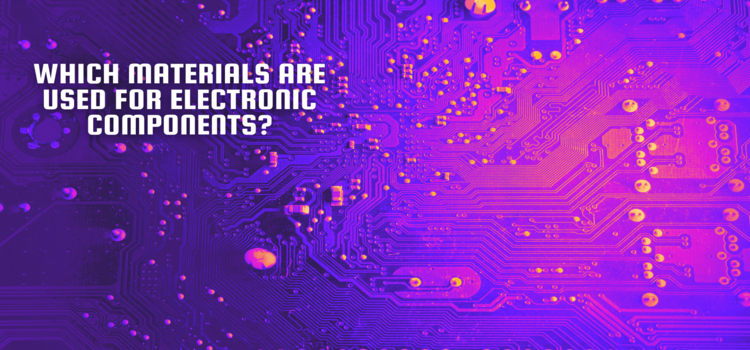Electronic components play a crucial role in the design and functionality of various electronic devices. They are the building blocks that enable the flow and control of electric currents within circuits. These components are constructed using different materials, each offering unique properties and functionalities. Let's explore some of the commonly used materials in electronic components:
Silicon is the dominant material in the manufacture of electronic components. It is a widely available, semiconducting material that possesses excellent electrical properties. This makes it ideal for the production of transistors, diodes, and integrated circuits (ICs). Silicon's ability to control the flow of electric currents forms the basis of modern electronics.
Copper is a highly conductive metal used extensively in electronic components. It provides excellent electrical and thermal conductivity, making it suitable for wiring and bus bars. Copper is commonly used in circuit boards, connectors, and other conductive paths to ensure efficient current flow.
Aluminum is widely used in electronic components due to its lightweight nature, good thermal conductivity, and low cost. It is frequently found in heat sinks, which help dissipate heat generated by high-power electronic devices such as processors and power transistors.
Ceramic materials have excellent thermal and electrical insulation properties. They are often used to build capacitors, resistors, and insulating substrates for integrated circuits. Ceramic capacitors are particularly popular due to their stability, high capacitance values, and suitability for high-frequency applications.
Glass serves as an insulating material for various electronic components. It is commonly used in electronic displays (e.g., LCD, OLED), vacuum tubes, and electron microscopy equipment. Glass components offer high transparency, thermal stability, and resistance to environmental factors, making them indispensable in many electronic devices.
Plastics, such as polyethylene, polystyrene, and polypropylene, are extensively used as insulating and protective materials in electronic components. They provide electrical isolation, mechanical support, and safeguard against external factors like moisture, dust, and impact. Plastics are commonly found in connectors, cable insulation, and device enclosures.
Gold is a precious metal used in certain electronic components due to its exceptional conductivity and corrosion resistance. It is commonly employed in connectors, switches, and high-quality printed circuit boards (PCBs) due to its reliable contact properties over extended periods.
These are just a few examples of the materials used in the construction of electronic components. The choice of materials depends on the specific requirements of the component, considering factors such as conductivity, insulation, heat dissipation, and cost-effectiveness. Advances in materials science continue to drive innovation in electronic component design, enabling the development of smaller, faster, and more efficient devices.
